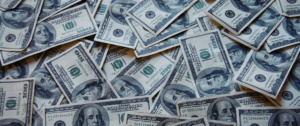Bank of Pakistan blows its trumpet regarding calm interbank market on rupee/dollar during 2016
The central bank of Pakistan considers that its effective management kept the interbank foreign exchange market calm for much of 2016. The macroeconomic fundamentals have showed some signs of improvement, which helped the rupee/dollar parity remain stable, hovering around 104.85 in the official market in almost entire year of 2016. The local currency has managed […]

The central bank of Pakistan considers that its effective management kept the interbank foreign exchange market calm for much of 2016. The macroeconomic fundamentals have showed some signs of improvement, which helped the rupee/dollar parity remain stable, hovering around 104.85 in the official market in almost entire year of 2016.
The local currency has managed to maintain its firmer trend in contrast to the performance of other currencies in the South Asian region, especially Indian and Sri Lankan rupees, which lost the value in 2016.
No doubt, the government so far managed to curtail the balance of payments and domestic currency despite continued depressing export numbers and surge in imports. Quarterly tranches from the International Monetary Fund (IMF) and strong remittance inflows provided the much-needed support, apart from inflows from other global lenders and some foreign direct investment.
Resultantly, the stability and ample liquidity in the forex market significantly contributed in the accumulation of foreign exchange reserves, which surged to a record high of $24 billion in October 2016.
Many currency strategists agreed that the support to the local currency has started weakening since the last quarter of the outgoing calendar year, as the IMF flows have dried; following the completion of its extended fund facility programme in September 2016.
Moreover, the current account deficit is continuously widening with the foreign direct investment losing traction. Problems on the remittances inflows, especially from the Middle East, also seem to add to the troubles for the exchange rate.
Ready or not, the currency volatility will be back as adverse reports continue to trickle in. Low exports, rise in oil prices post-OPEC and non-OPEC agreements, and anticipated upcoming foreign payments — all are fueling expectations that the domestic unit would stay under pressure in 2017.
Sooner or later, the country’s exchange rate will start responding in some ways to weak economic data and policy signals and the officials concerned will face difficulties in letting the interbank market ease in the times to come.
The rupee is seen depreciating by three to four percent over the coming year, as weak foreign inflows, probable upside trajectory in consumer prices and upcoming external debt servicing obligations pose threat to the value of the local currency.
The expected weakness in the regional currencies, especially yuan, tracking strong dollar with anticipated three interest rate hikes by the US Fed could also exert pressure on the Pakistani rupee in 2017.
The forecast of some currency strategists showed that the rupee will depreciate to 107-109 against the dollar in 2017. The rupee depreciated by 3.95 percent in2016.
“We expect the Pakistani rupee to fall by four percent in the year 2017, keeping in view the average depreciation rate of four percent on annual basis for the last 16 years and the rate to close at 108.75-109 by the yearend of 2017,” head of treasury at a commercial bank said.
“The downside pressure on the exchange rate can also be worsened by an anticipated increase in inflation,” he added.
Pakistan is set to fulfill debt repayment obligations to the Paris Club under the official development assistance and maturity of 10-year Eurobonds worth $750 million during the current fiscal year. The debt serving commitments could not bode well for the foreign exchange reserves and the currency, as well.
Though, Pakistan’s forex reserves have improved substantially over the years with an import cover of over five months in November, some pressures on reserves can be felt, which fell to $23.132 billion, of those the State Bank’s reserves stood at $18.190 billion as of December 16, 2016.
There are also other factors at play. The State Bank of Pakistan’s data shows that the real effective exchange rate (REER) currently stands at 123.96, amid low interest rate environment. Previously, REER index achieved these levels in early 90’s when the discount rate remained in the range of 14 to 15 percent.
This reveals the local currency is overvalued where the basket of goods purchased locally is expensive as compared to being bought oversees; thus, giving rise to imports.
Shiraz Zaidi, an analyst at Arif Habib Limited, believes that a depreciation in the currency won’t help boost exports much either, as it would push for a similar depreciation in other regional currencies to balance off the impact.
“Rather, a gradual depreciation should provide some relief to exports and perhaps even boost FDI. Power shortages, structural deficiencies and global economic slowdown remain some of the bigger issues hampering exports, besides the local currency being overvalued.”
Analysts see some room for correction in the rupee, although historically estimates provided for the local unit misalignment have not been empirically strong and have shown inconsistencies in degree of over / undervaluation.
“Going forward, while we expect the current account deficit to widen to 1.7 percent of the gross domestic product in FY17 as compared to 1.1 percent in FY16, the much-anticipated contractionary monetary policy (interest rate expected to move higher from March 2017 by 25 to 50 basis points) should provide some support to the rupee,” Zaidi added.
The current account deficit jumped more than $3 billion in January-November period of 2016. But, for some the era of low interest rates might stick a bit longer at least in 2017. Keeping the interest rate low will also assist the export sector by keeping the cost of capital down.
Meanwhile, the rupee, which was quoted flat at 106 against the dollar over the last 15 months, felt pretty frantic, breaching 109 barrier in the open market during the last week of November 2016.
The broad nature of volatility seen across the kerb market was stemmed from a steep appreciation of the greenback post-conclusion of the US presidential elections in the previous month. Investors’ expect further strengthening of the dollar, fuelling swings in the rate of the currency pair.
Besides, the decline in foreign inflows, smuggling of foreign currency and gold also drove the rupee down in the open market.
Some rumours had also added to the hike in the rupee / dollar rate that the government might follow India in demonetisation of high denomination notes, resulting in heavy buying of foreign currency to park black money. Though, the rupee has managed to recover its value and was quoted at 108/dollar since the middle of December, analysts still see a level of volatility in the open market.
“Well we’ve already seen days where the open market and interbank spread has stretched by over Rs3 (December 20, 2016). This [fluctuation] can be driven by a variety of factors, even by the likes of the upcoming holiday season where a spike in travelling can trigger a demand for the US currency,” Zaidi added.
Moreover, a resolution passed by the Senate regarding withdrawing of Rs5,000 note to curb corruption and money laundering, could also heightened unrest in the currency market. This would lead to increase in dollar buying from the investors.
Analysts believe the impact of demonetisation of Rs5,000 bank note will have an adverse affect on the economy in the short run, as cash constitute around 22.6 percent of the broad money.
Any potential moves regarding demonetisation of notes would disrupt the monetary and financial system, especially in the rural areas where the cash constitutes a major part of the monetary transactions. However, in the long run, it will certainly reduce money laundering and corruption.









